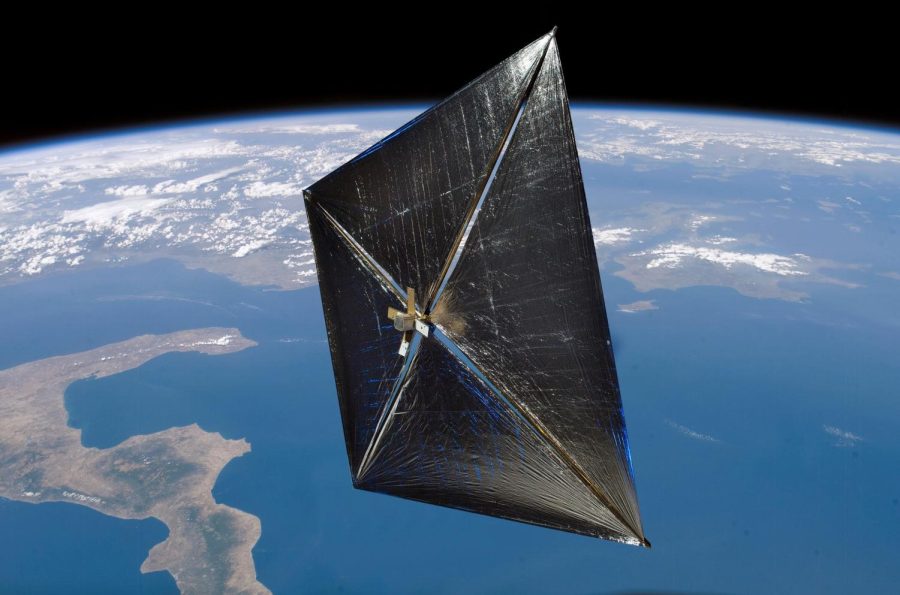Sailing Through the Stars
NASA’s new system of propulsion for getting mankind to the stars
Photo courtesy commons.wikipedia.org
A concept image generated of NASA’s Solar Sail.
February 10, 2023
Almost a decade ago, National Aeronautics and Space Administration (NASA), unveiled a new way of space transportation – solar sails. The concept of solar sails has been around since the 1970s, but technology wasn’t available to use these designs feasibly. Recently there has been an influx in technology and availability of resources to make these designs viable and useful in space.
James Howlett (11) appreciates the vastness of outer space and is excited about the space sail being unveiled.
“I like space because it’s big, and NASA because they’re cool and discover new things in space. Their new solar sail will help space discovery,” Howlett said.
According to NASA’s official document on the the spacecraft, the solar sail uses solar energy and light to propel itself through space. When the suns photon particles reflect off the sail’s material- which is 40-100 times thinner than a sheet of paper- the sail gains the ability to move. With millions of photons being constantly reflected off this sail, this provides enough thrust to perform maneuvers through space. The sail will be able to hover in place and rotate the space vehicle’s plane of orbit, which would take more propellant fuel than standard rocket systems. Because these solar sails use less fuel, the weight of the spacecraft will be dramatically reduced. The sail varies in size from tens of meters up to one thousand meters in diameter and will typically be shaped like a square. The solar sail’s structure will be comprised of the sail connected to ultra-lightweight trusses that are connected to a central hub. This lightweight design will help NASA explore farther into the space than previously thought possible.
Abigail Hampton (9) is eager to see more of space being discovered with technology that NASA utilizes.
“I am excited to see how NASA’s new solar sail impacts space exploration,” Hampton said.
The solar sail will be utilized on complex missions that require minuscule adjustments such as hovering in place or changing orbital elements and their orientation. They will also be used on missions that require constant vehicle thrust. This allows for long-distance, low-cost missions.
The solar sail is scheduled to launch in early 2023 as part of a Rideshare mission on Rocket Lab’s Electron launch vehicle from the company’s Launch Complex 1 in New Zealand. The solar sail is stored in a small box, around the size of a microwave, that deploys once the spacecraft reaches a designated time after launch. To activate, the boom arms of the vehicle shoot out, the sail unfurls itself from inside the capsule, and is autonomously rigged to the arms of the spaceship. After roughly 25 minutes the sail is fully deployed and ready for use. Multiple cameras take images of the sail after deployment to assess the sails shape and alignment.
Halle Abbott (10) follows NASAs discoveries and is eager to see new technology in space.
“I think that space is terrifying because of how large it is and how much we still need to learn about it. NASA has made some revolutionary discoveries with modern technology, and I can’t wait to see what they discover next with the new solar sail. I find the solar sail interesting because it uses sunlight to propel the machine,” Abbott said.





